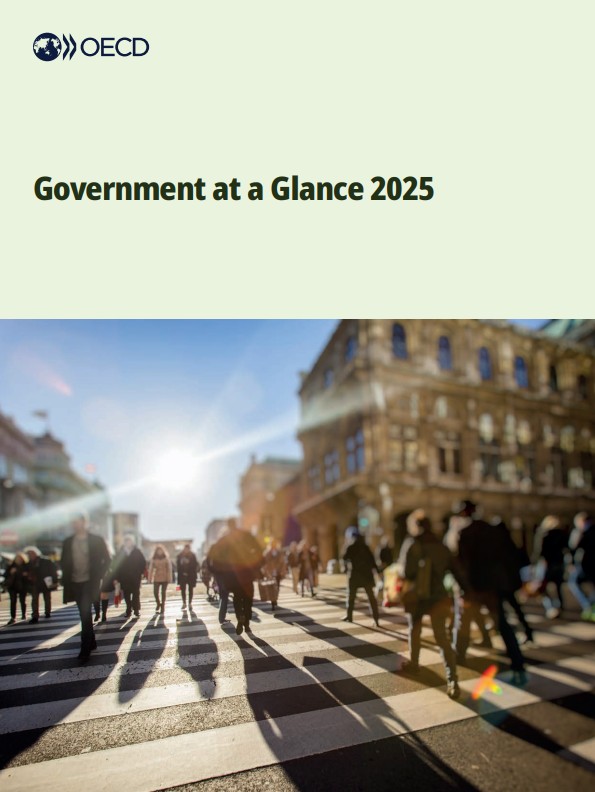목차
Foreword 3
Acknowledgements 4
Executive summary 9
Chapter 1. Governing for the green transition 11
Commitment 15
Capabilities 21
Consensus 30
Note on related OECD work 37
References 38
Chapter 2. Trust, security and dignity 43
2.1. Levels of trust in public institutions 44
2.2. Drivers of trust in public institutions 46
2.3. Security 48
2.4. Dignity 50
Chapter 3. Prosperity 53
3.1. Prosperity and household finances 54
3.2. Institutions and growth 56
3.3. Cost effectiveness 58
3.4. Shared prosperity and youth inclusion 60
3.5. Poverty and inequality 62
Chapter 4. Public services 65
4.1. Satisfaction, accessibility, responsiveness and quality of healthcare services 66
4.2. Satisfaction, accessibility, responsiveness and quality of education 68
4.3. Trust, accessibility, responsiveness, and quality of justice services 70
4.4. Satisfaction with public administrative services 72
4.5. Strategies and institutional organisation for public administrative services delivery 74
4.6. Roles and responsibilities for public administrative services design and delivery 76
4.7. Seamless and accessible public administrative services 78
4.8. Measurement, engagement and improvement of public administrative services 80
Chapter 5. Governance of cross-cutting agendas 83
5.1. Policy coherence and co-ordination for sustainable development 84
5.2. Public policy evaluation 86
Chapter 6. Openness, transparency and participation 89
6.1. Transparency of public information 90
6.2. Political efficacy 92
6.3. Citizen participation and deliberation 94
6.4. Protection and promotion of civic space 96
Chapter 7. Digital government and innovation 99
7.1. Digital government index 100
7.2. Digital public infrastructure 102
7.3. Open government data 104
7.4. Open access to high-value datasets 106
Chapter 8. Regulation 109
8.1. Stakeholder engagement in regulation 110
8.2. Regulatory impact assessment 112
8.3. Ex post evaluation 114
8.4. Governance of sector regulators 116
8.5. Green objectives and powers of sector regulators 118
8.6. Green capabilities of sector regulators 120
8.7. Better regulation for the green transition 122
Chapter 9. Budgeting practices 125
9.1. Medium-term and top-down budgeting 126
9.2. Performance budgeting 128
9.3. Spending reviews 130
9.4. Independent fiscal institutions 132
Chapter 10. Infrastructure planning and delivery 135
10.1. Management of asset performance throughout the life cycle 136
10.2. Ensuring the resilience of critical infrastructure 138
10.3. Delivering climate-resilient infrastructure 140
10.4. Evidence-informed infrastructure decision making 142
Chapter 11. Procurement 145
11.1. Size of public procurement 146
11.2. Professionalisation of public procurement 148
11.3. Integration of public procurement with public financial management 150
11.4. Green public procurement 152
11.5. Efficient public procurement 154
Chapter 12. Integrity 157
12.1. Perceptions of public sector integrity 158
12.2. Integrity and anti-corruption strategies 160
12.3. Corruption risk management and internal audit 162
12.4. Accountable law making 164
Chapter 13. Public employment and representation 167
13.1. Employment in general government 168
13.2. Age profile of the central administration workforce 170
13.3. Educational profile of the central administration workforce 172
13.4. Gender parity in central administrations 174
13.5. Gender parity in politics 176
13.6. Youth representation in politics 178
Chapter 14. Managing human resources 181
14.1. Delegation of public employment policies in central administrations 182
14.2. Civil service oversight institutions 184
14.3. Performance assessments in central administrations 186
14.4. Employee engagement in central administrations 188
14.5. Perceptions of management and leadership quality in central administrations 190
Chapter 15. Public spending 193
15.1. General government expenditures 194
15.2. Government expenditure by function (COFOG) 196
15.3. Structure of government expenditures by economic transaction 198
15.4. Government investment spending 200
15.5. General government fiscal balance 202
Chapter 16. Public revenues and production costs 205
16.1. General government revenues 206
16.2. Structure of government revenues 208
16.3. Revenues and spending by level of government 210
16.4. General government gross debt 212
16.5. Production costs and outsourcing 214
Structure and indicators 216
Annex A. OURdata Index 223
Annex B. Methodology for the OECD Digital Government Index 225
Annex C. Methodology for the fiscal advocacy index 228
Annex D. Methodology for the infrastructure governance indicators 231
Annex E. Classification and definitions of occupations
and educational levels 235
Annex F. Methodology for indexes on Strategic Human Resources Management 237
Annex G. Reporting systems and sources of countries for government in the National Accounts statistics 240
Annex H. Methodology for revenue aggregates 242
Annex I. Classification of the Functions of Government (COFOG) 243
Annex J. Additional figures accessible online 245



